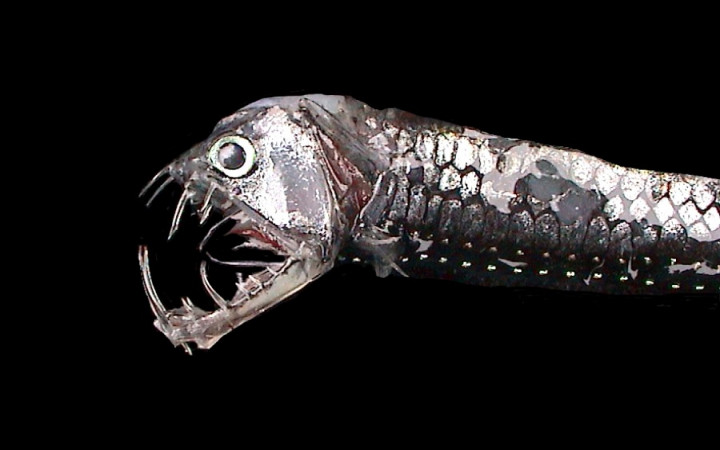Today’s Wonder of the Day was inspired by Izaak. Izaak Wonders, “What fish has the largest teeth?” Thanks for WONDERing with us, Izaak!
When you think of fish and teeth, what comes to mind? If you’ve ever seen “Jaws,” then you might picture the razor-sharp teeth of the great white shark. You might also think of piranhas! Those tiny fish have big appetites. They can devour a large animal in a matter of minutes.
When it comes to large teeth, though, one fish leads the rest. Great white sharks have large teeth, but they’re also huge fish. When tooth size is compared to head size, the Sloane’s viperfish stands out as the fish with the largest teeth!
How large are the teeth of Sloane’s viperfish? They’re so large that, when the fish has its mouth closed, its teeth overlap its jaws! The fish has to open its mouth to make its jaws vertical before it can swallow prey. Its largest teeth are about half the size of its head!
The Sloane’s viperfish has a large head that tapers to a small, forked tail. It can be anywhere from one to eight inches long. Besides its disproportionately large teeth, the Sloane’s viperfish also stands out because of its color. It’s a shining silver-blue and has small photophores along its body.
The light from these photophores actually helps the Sloane’s viperfish hunt for food. The light attracts smaller fish. Once close enough, the Sloane’s viperfish can trap them in its long teeth.
During the day, the Sloane’s viperfish stays in deep water (from 2,000 to over 8,000 feet deep). At night, though, it will move a bit closer to the surface. At less than 2,000 feet deep, food can be found more easily.
What exactly does the Sloane’s viperfish eat? Mostly small fish and crustaceans. Of course, it’s always on the lookout for other predators, too. Atlantic bluefin tuna like to make Sloane’s viperfish the main course at dinnertime.
So do you need to be worried about running into a Sloane’s viperfish? Not likely! The Sloane’s viperfish is a deep-sea dragonfish. It makes its home in tropical and subtropical oceans around the world. You’re not likely to run into its big teeth in the shallows of your favorite beach.
Standards: NGSS.LS1.A, CCRA.L.3, CCRA.L.6, CCRA.R.1, CCRA.R.2, CCRA.R.4, CCRA.R.10, CCRA.SL.1, CCRA.W.7




